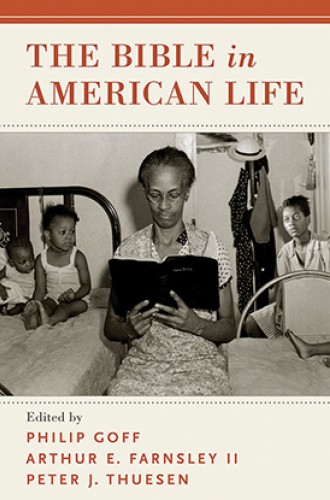The Bible's place in the American imagination
Scripture shapes culture—but always through what we bring to it.
King James is alive and well. The King James Version of the Bible, that is. In fact, it’s the most widely read translation in America. Although Zondervan’s NIV far surpassed the KJV in sales some time ago, 55 percent of people who’ve read the Bible outside of a worship service in the past year still prefer to read from the KJV, according to the studies analyzed in the introduction to a new book coedited by Philip Goff, Arthur E. Farnsley II, and Peter J. Thuesen.
In this impressive collection, 30 scholars contribute to an immense sociological review of who reads the Bible, how they read it, and how their reading has shaped American culture. The book begins with a summary of two national surveys (the 2012 General Social Survey and the National Congregation Study III), a thread that is referred to throughout the subsequent essays. The second section, “Past,” consists of 15 essays that explore the Bible’s use throughout American history, from the first Bible published in America (“the Indian Bible of 1663”) to the Bible’s influence on soul and pop music to the “commercial concerns” of the Bible industry. The reflections in these essays on how Americans have used the Bible serve as a stepping- stone to understanding why Americans use the Bible the way they do today.
For instance, the “perspicuity of scripture”—the idea that the Bible is lucid and its meaning apparent—is nowhere more popular than in America. In his essay on interpretive authority and the rise of reference Bibles, B. M. Pietsch attributes the popularity of this idea to “sources as diverse as Reformation rhetoric of ‘the Bible alone,’ Common Sense epistemology, republican and revivalist ideas of religious authority, and frontier self-reliance.” Other essays in this volume, such as Emerson B. Powery’s review of “common sense” readings by white slaveholders, demonstrate how unwavering commitment to the idea of the Bible’s perspicuity can quickly become a prelude to very bad theology. These insights are significant for those who teach the Bible. Americans are still committed to common sense readings even though the complexities of scripture are time and again made known (see J. Derrick Lemons’s essay “Feels Right Exegesis”). Knowledge of how the Bible was read in the past will help pastors and teachers understand why our congregants or students are reading it the way they do today—and what we can do to help them read more faithfully.






